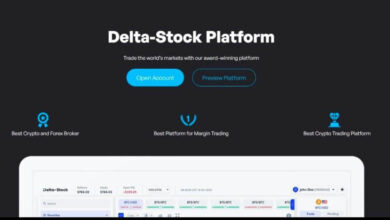SoFi stock price prediction: technical analysis

SoFi is a leading online personal finance platform that offers a wide range of products and services including student loan refinancing, mortgages, personal loans, and investing. The company went public in December 2020 and its stock has been on a tear since then. In this article, we will take a look at SoFi Stock Price Prediction using technical analysis.
-SoFi Stock Price Prediction-
It’s no secret that SoFi’s stock price has taken a hit in recent months. The question is, can the stock stage a comeback? In this article, we’ll take a look at the technical indicators to see if a rebound is in the cards.
First, let’s look at SoFi’s stock price chart. After peaking in late January, the stock price has been in a steady decline. The good news is that the stock appears to be finding support at around $9.00. This is a key level to watch, because if the stock can hold above this level, it could be poised for a rebound.
The next thing to look at is the Relative Strength Index (RSI). This technical indicator measures the level of overbought or oversold conditions in the market. A reading below 30 indicates that the market is oversold, while a reading above 70 indicates that the market is overbought.
Currently, the RSI for SoFi’s stock is at 42, which indicates that the stock is neither overbought nor oversold. This is a good sign, because it means that there is room for the stock to move higher.
Another technical indicator to keep an eye on is the moving average convergence divergence (MACD). This indicator measures the difference between two moving averages. A positive MACD indicates that the stock is in an uptrend, while a negative MACD indicates that the stock is in a downtrend.
Currently, the MACD for SoFi’s stock is negative, but it is starting to turn positive. This is a bullish sign, because it indicates that the stock may be ready to start climbing higher.
The last technical indicator we’ll look at is the Fibonacci Retracement levels. These levels indicate areas of support and resistance in the market. The 50% Fibonacci Retracement level is a key level to watch, because it indicates that the stock is halfway back to its previous high.
So far, SoFi’s stock has been struggling to breakthrough the 50% Fibonacci Retracement level of $10.50.
-Technical Analysis-
Technical analysis is a technique used by traders to predict future price movements by analyzing past price data and trends. Technical analysis is based on the premise that price movements are not random, but rather follow certain patterns that can be identified and used to predict future price movements.
There are many different technical indicators that traders can use to predict future price movements, and no one indicator is perfect. Technical indicators can be used to identify trends, support and resistance levels, and potential reversals.
Some common technical indicators include moving averages, Relative Strength Index (RSI), and Bollinger Bands. These indicators can be used alone or in combination to help traders make informed decisions about when to buy or sell a stock.
SoFi is a financial technology company that offers a range of products and services, including student loan refinancing, personal loans, and investment products. SoFi has been in the news recently after announcing its plans to go public through a special purpose acquisition company (SPAC).
SoFi stock is not yet trading publicly, but we can still analyze the stock using technical analysis. Based on the current price action, it appears that the stock could be poised for a breakout to the upside.
The moving averages are currently in bullish alignment, with the 50-day moving average acting as support. The RSI is also in bullish territory, indicating that the stock is not overbought at this time.
Bollinger Bands can be used to identify potential reversals, and the current setup on SoFi stock suggests that a breakout to the upside is likely. The stock is currently trading near the upper Bollinger Band, which is a bullish sign.
Overall, the technical picture for SoFi stock looks bullish at this time. The stock could see a sharp move to the upside if it breaks out above the $12.50 level.
-The current state of SoFi-
It’s no secret that SoFi has been through a lot lately. The company has been embroiled in scandal after scandal, and its stock price has taken a beating as a result. But despite all of the negativity, SoFi is still standing. In fact, it’s actually doing quite well.
SoFi has managed to weather the storm better than most expected. The company has made some smart decisions, and it has managed to keep its head above water. SoFi is still growing, and it is still attracting new customers. The company is also starting to turn a profit.
The future looks bright for SoFi. The company has made some smart moves, and it is in a good position to continue doing well. SoFi is still a young company, and it has a lot of potential. It will be interesting to see how SoFi fares in the years to come.
-SoFi’s future prospects-
It’s been a tough couple of years for SoFi. The company has had to deal with multiple lawsuits, allegations of fraud, and a revolving door of CEOs. Despite all of this, the company has managed to stay afloat and even grow its business.
SoFi’s future prospects are looking up. The company has a new CEO, Jack Dorsey, who is best known for co-founding Twitter. Dorsey is a well-respected figure in the tech world and he has already made some changes at SoFi that have investors optimistic about the company’s future.
SoFi has also partnered with some major companies, including Google and Apple, which gives it a lot of potential for growth. Google has invested $1 billion in SoFi and has said that it is “committed to helping SoFi grow.” Apple has also partnered with SoFi to offer Apple Card holders 0% interest on SoFi loans.
SoFi’s stock price has been on the rise in recent months and is currently trading at around $7 per share. This is up from its 52-week low of $3.48 per share. Analysts believe that SoFi’s stock price could continue to rise in the coming months and years as the company continues to grow its business.
-What the experts are saying about SoFi-
The stock of online personal finance company SoFi has been on a tear in recent months, and experts believe there is still more upside potential. SoFi is a leader in the online lending space, and its stock has benefited from the company’s strong growth. SoFi has been one of the fastest-growing companies in the fintech space, and its stock has reflected that growth. SoFi’s stock is up nearly 400% since the start of 2023, and experts believe there is still more room to run.
Analysts at Piper Jaffray recently initiated coverage on SoFi with a bullish rating and a $45 price target, which is nearly 50% above the current stock price. Piper Jaffray analyst Kevin Barker said that SoFi is “well positioned to be a market leader” in the online lending space. Barker also said that SoFi’s “robust growth prospects” warrant a premium valuation.
Other analysts are also bullish on SoFi. SunTrust Robinson Humphrey has a $45 price target on the stock, while Goldman Sachs has a $49 price target. SoFi is scheduled to report its fourth-quarter results on February 25, and analysts will be looking for the company to continue its strong growth. SoFi’s stock is a risky bet, but the potential rewards could be substantial for investors who are willing to take on that risk.
-SoFi’s stock price history-
What caused SoFi’s stock price to drop in 2020?
It’s no secret that 2020 has been a tough year for most industries, and the stock market is no exception. SoFi’s stock price has been volatile in recent months, and it took a hit in 2020 due to the pandemic.
The company’s stock price began to drop in March, when the full extent of the pandemic became clear. SoFi was forced to lay off employees and scale back its operations, and its stock price reflected these changes.
SoFi’s stock price has begun to recover in recent months, as the company has adjusted to the new reality of the pandemic. The company has launched new products and services that have been well-received by customers, and its stock price has responded accordingly.
Looking ahead, SoFi’s stock price will likely continue to be volatile in the short-term. However, the company is well-positioned for long-term growth, and its stock price is likely to reflect this in the coming years.
-How to predict SoFi’s stock price-
It is no secret that the stock market is unpredictable. So, how can you predict the stock price of a company like SoFi? Technical analysis may be one way to do it.
Technical analysis is a method of evaluating securities by analyzing the statistical trends in the market data. In other words, technical analysts believe that the past performance of a security can be a helpful predictor of its future performance.
There are many different techniques that can be used in technical analysis, but one of the most popular is called moving averages. Moving averages are simply a way to smooth out the volatility in a security’s price.
There are two types of moving averages: simple moving averages (SMAs) and exponential moving averages (EMAs). SMAs are calculated by taking the average of a security’s prices over a certain period of time. EMAs, on the other hand, give more weight to recent prices.
Both SMAs and EMAs can be used to predict future prices, but EMAs are generally more accurate. This is because they are better able to filter out the noise in the market data.
One way to use moving averages to predict future prices is to look for crossovers. A crossover occurs when a security’s price moves from one side of a moving average to the other.
For example, let’s say that SoFi’s stock price is currently $10. The 50-day SMA is at $9, and the 200-day SMA is at $8. This would be considered a bullish crossover, because it suggests that the stock price is starting to move higher.
Conversely, a bearish crossover occurs when a security’s price moves from above a moving average to below it. In our example, if SoFi’s stock price falls to $8, that would be a bearish crossover.
Crossovers can be used to generate buy and sell signals. A buy signal is generated when the price of a security crosses above a moving average. A sell signal is generated when the price of a security crosses below a moving average.
Of course, crossovers are just one tool that can be used in technical analysis. There are many other
-SoFi’s technical indicators-
The SoFi 50 is a stock market index made up of the 50 most popular stocks among social media users. The index is maintained by the Social Finance, Inc. (SoFi) and is designed to represent the social media user’s collective view of the stock market.
The SoFi 50 is calculated using a proprietary algorithm that takes into account the number of social media mentions, as well as the sentiment of those mentions, to arrive at a score for each stock. The 50 stocks with the highest scores are then included in the index.
The SoFi 50 is rebalanced on a quarterly basis, and the composition of the index can change from one quarter to the next.
The SoFi 50 has been criticized for being a “vanity index” that does not provide any real investment value. However, supporters of the index argue that it is a valuable tool for gauging the collective sentiment of social media users, which can be a useful leading indicator for the stock market.
-SoFi’s moving averages-
The moving average is a simple, yet powerful, tool that is widely used by traders and investors to predict future stock prices. The moving average is simply the average price of a stock over a certain period of time. For example, if you take the moving average of a stock over the past 10 days, you are effectively taking the average price of the stock over the past 10 days.
There are many different types of moving averages, but the most common are the simple moving average (SMA) and the exponential moving average (EMA). The SMA is simply the average of the past n prices, where n is the number of days in the moving average. The EMA is a more sophisticated moving average that gives more weight to recent prices.
The moving average is a popular tool among traders and investors because it can be used to predict future stock prices. For example, if a stock is trading above its moving average, it is generally considered to be in an uptrend. Conversely, if a stock is trading below its moving average, it is generally considered to be in a downtrend.
There are a number of different ways to use the moving average to predict future stock prices. One popular method is to use the moving average as a support or resistance level. For example, if a stock is trading above its 200-day moving average, it is generally considered to be in an uptrend. Conversely, if a stock is trading below its 200-day moving average, it is generally considered to be in a downtrend.
Another popular method is to use the moving average as a buy or sell signal. For example, if a stock is trading above its 200-day moving average, it is generally considered to be a buy signal. Conversely, if a stock is trading below its 200-day moving average, it is generally considered to be a sell signal.
The moving average is a powerful tool that can be used to predict future stock prices. However, like all tools, it has its limitations. One of the biggest limitations is that it is a lagging indicator. This means that it is based on past prices and may not be accurate in predicting future prices.
-SoFi’s support and resistance levels-
As a SoFi member, you have access to exclusive support and resources to help you succeed financially. Our world-class team is here to answer your questions and provide guidance when you need it most.
When it comes to your money, there is no such thing as a stupid question. SoFi members have access to a wide range of support, including one-on-one financial advice, 24/7 member support, and access to our extensive knowledge base.
Not sure where to start? Our team can help you identify your financial goals and create a plan to reach them. We’ll be with you every step of the way, providing support and resources to help you make smart decisions about your money.
SoFi’s support and resources are available to all members, regardless of account balance. So whether you’re just getting started with investing or you’re a seasoned pro, we’re here to help you reach your financial goals.
If you have any questions about SoFi or your finances, our team is here to help. Visit our website or give us a call today.
-SoFi’s chart patterns-
Chart patterns are one of the most popular ways that traders use to try and predict future stock prices. There are literally hundreds of different chart patterns that have been identified over the years, with some being more reliable than others. In this blog post, we’re going to take a look at some of the most popular chart patterns that traders use to try and predict the future direction of the SoFi stock price.
One of the most popular chart patterns is the head and shoulders pattern. This pattern is formed when the stock price forms a peak (the head), followed by a lower high (the left shoulder), and then another lower high (the right shoulder). The head and shoulders pattern is considered to be a bearish reversal pattern, and it often signals that the stock price is about to start falling.
Another popular chart pattern is the cup and handle pattern. This pattern is formed when the stock price forms a rounded bottom (the cup), followed by a small rally (the handle). The cup and handle pattern is considered to be a bullish continuation pattern, and it often signals that the stock price is about to start rising.
The last chart pattern we’re going to look at is the double top pattern. This pattern is formed when the stock price forms two consecutive highs, and it is considered to be a bearish reversal pattern. The double top pattern often signals that the stock price is about to start falling.
These are just a few of the many different chart patterns that traders use to try and predict future stock prices. While some of these patterns are more reliable than others, they all have the potential to provide valuable information to traders.




